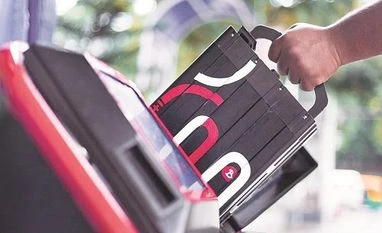1. Introduction
In October 2025, China formally lodged a complaint against India at the World Trade Organization (WTO), claiming that India’s Production Linked Incentive (PLI) schemes — a flagship component of its industrial strategy — violated international trade rules. The dispute marks a significant development in global trade politics, as both nations compete for dominance in emerging industries such as electric vehicles (EVs), battery storage, electronics, and green technologies.
At the heart of this conflict lies a fundamental tension between industrial policy and global trade governance. India’s PLI schemes are designed to strengthen domestic manufacturing under the “Make in India” and “Atmanirbhar Bharat (Self-Reliant India)” campaigns. China, however, views them as discriminatory subsidies that disadvantage foreign, especially Chinese, exporters.
This article provides an in-depth analysis of why China challenged India’s PLI programme at the WTO, exploring the economic motivations, legal arguments, strategic implications, and broader geopolitical dimensions of this high-stakes trade confrontation.
2. Background: What Is the PLI Scheme?
The Production Linked Incentive (PLI) scheme, launched by the Indian government in 2020, is a performance-based incentive system designed to promote domestic manufacturing across key sectors. The government offers financial incentives to companies based on their incremental sales of products manufactured in India.
Initially covering sectors such as electronics, pharmaceuticals, and medical devices, the scheme was later expanded to 14 strategic sectors, including:
- Automobiles and auto components
- Advanced Chemistry Cell (ACC) battery manufacturing
- Telecom and networking products
- Textiles and technical fabrics
- Food processing
- Renewable energy and solar PV modules
The core objectives of the PLI scheme are:
- To reduce import dependence,
- To encourage foreign direct investment (FDI) in high-value sectors,
- To enhance domestic value addition (DVA), and
- To generate employment and strengthen India’s export competitiveness.
According to India’s Ministry of Commerce, the total outlay for the various PLI schemes exceeds ₹1.97 lakh crore (about USD 26 billion), making it one of the most ambitious industrial subsidy programmes in India’s history.
3. China’s Complaint at the WTO
In October 2025, China filed a request for consultations with India under the WTO’s Dispute Settlement Understanding (DSU). The complaint targets several of India’s PLI programmes — particularly those related to electric vehicles, batteries, and automobile components.
China’s request alleges that India’s PLI schemes:
- Condition benefits on domestic value addition, thereby favouring locally produced goods.
- Discriminate against imported inputs and components, especially those originating from China.
- Violate core WTO agreements, including:
- The Agreement on Subsidies and Countervailing Measures (SCM Agreement),
- The General Agreement on Tariffs and Trade (GATT) 1994, and
- The Agreement on Trade-Related Investment Measures (TRIMs).
Beijing’s argument is that India’s schemes distort fair competition and nullify or impair trade benefits that Chinese exporters are entitled to under multilateral trade rules.
4. The Legal Basis of China’s Case
4.1 The WTO’s Rules on Subsidies
Under the SCM Agreement, a subsidy exists when:
- There is a financial contribution by a government (such as grants, tax credits, or fiscal incentives);
- It confers a benefit on the recipient; and
- It is specific to certain enterprises, industries, or regions.
Subsidies that are contingent upon export performance or the use of domestic over imported goods are considered prohibited under Article 3 of the SCM Agreement.
China’s claim is that India’s PLI schemes fall under this “import-substitution subsidy” category because the incentives depend on achieving a certain Domestic Value Addition (DVA) threshold.
For example, the PLI scheme for ACC battery manufacturing requires companies to achieve a minimum percentage of value addition using domestic inputs, raw materials, or components. Such conditions, China argues, implicitly discourage the use of imported inputs — a direct violation of WTO’s subsidy rules.
4.2 Violation of GATT and TRIMs
In addition to the SCM Agreement, China cites breaches of:
- GATT Article III (National Treatment): which mandates that imported products be treated no less favourably than like domestic products.
- TRIMs Article 2.1: which prohibits investment measures that are inconsistent with GATT Article III.
- Annex to TRIMs Agreement: which explicitly identifies local content requirements as inconsistent with WTO obligations.
According to China, the PLI’s local content requirements discriminate against imported goods and restrict market access for foreign firms — a clear breach of India’s WTO commitments.
5. India’s Defence and Counter-Arguments
The Indian government maintains that the PLI schemes are WTO-compliant and non-discriminatory. The official position, reiterated by the Ministry of Commerce, is that:
- The incentives are performance-linked, not import-substitution-based.
- The schemes are open to both domestic and foreign manufacturers, including Chinese companies that invest or produce within India.
- The Domestic Value Addition metric is a performance indicator, not a mandatory local content rule.
- The primary goal is to build industrial capacity in critical sectors and integrate India into global value chains, not to restrict imports.
Furthermore, India could argue that many other countries, including the United States (Inflation Reduction Act) and the European Union (Green Industrial Plan), have introduced similar industrial subsidies — and China itself has long practised extensive state support in sectors like solar panels, EVs, and semiconductors.
Thus, India may frame China’s complaint as politically motivated rather than legally sound.
6. Economic and Strategic Context
6.1 The Battle for Global Manufacturing
India’s PLI schemes represent an effort to position itself as an alternative manufacturing hub to China. As global supply chains shift post-COVID-19, multinational firms seek to diversify away from China due to geopolitical tensions, rising costs, and concerns about over-dependence on one country.
By offering targeted incentives, India aims to attract investment from companies such as Apple, Tesla, Samsung, and Foxconn, thereby capturing segments of the global value chain currently dominated by China.
For Beijing, India’s manufacturing ambitions — particularly in EVs, batteries, and electronics — pose a strategic economic challenge. China has long dominated these sectors through a combination of scale, subsidies, and supply chain control. The Indian PLI programmes, if successful, could erode China’s global market share and influence.
6.2 The EV and Battery Dimension
The most contentious part of China’s complaint involves electric vehicle and battery manufacturing.
China currently controls over 75% of global lithium-ion battery capacity and is home to major EV producers such as BYD, NIO, and CATL. India’s ACC PLI scheme, with an outlay of ₹18,100 crore, directly targets this dominance by incentivizing domestic production of advanced battery technologies.
Beijing fears that if India achieves large-scale, cost-competitive battery production, it could reduce dependence on Chinese imports, diversify supply chains, and compete in export markets — threatening China’s grip on the global clean-energy sector.
7. The Geopolitical Underpinnings
The WTO complaint must also be seen in a geopolitical context rather than purely legal terms. The India-China rivalry extends far beyond trade — encompassing border disputes, strategic competition in the Indo-Pacific, and influence over developing nations.
By taking India to the WTO, China sends multiple signals:
- Diplomatic: It seeks to constrain India’s industrial ambitions using legal and institutional mechanisms.
- Economic: It aims to protect Chinese firms’ market access and slow India’s technological rise.
- Symbolic: It positions itself as a defender of “free trade” — an ironic stance, given its own state-driven model.
At the same time, the move exposes China’s anxiety over India’s growing partnership with the U.S., Japan, and Europe in supply chain diversification initiatives like the Quad and Indo-Pacific Economic Framework (IPEF).
8. Precedents and Comparative Cases
Trade disputes over subsidies are not new. Several countries have faced WTO scrutiny for industrial support schemes:
- The U.S. “Buy American” Act and Inflation Reduction Act (IRA) have faced criticism for similar domestic-content incentives.
- The EU’s Green Industrial Plan includes subsidies to local manufacturers of batteries and clean-tech products.
- China itself has been accused multiple times of providing non-transparent subsidies to its solar, steel, and rare-earth industries.
India could thus argue that the PLI scheme is part of a global trend of state-supported industrial policy — not a violation of trade norms but an evolution of economic strategy in a post-neoliberal era.
9. Legal Process and What Happens Next
Under WTO procedures:
- Consultation Stage: China and India have 60 days to hold consultations and attempt resolution.
- Panel Formation: If unresolved, China may request a dispute panel to adjudicate the matter.
- Panel and Appellate Review: The panel’s findings can be appealed (though the WTO’s appellate body remains dysfunctional since 2019).
- Compliance or Retaliation: If India loses and fails to comply, China could seek authorization to impose counter-measures.
Given the paralysis of the WTO’s appellate mechanism, the dispute might remain unresolved or politically negotiated outside the WTO framework.
10. Broader Implications for Global Trade Policy
10.1 Redefining Industrial Policy
The India-China dispute highlights a paradigm shift in global trade thinking. For decades, WTO rules discouraged direct industrial subsidies. However, after the pandemic, major economies — including the U.S., EU, Japan, and China — have revived industrial policy to secure supply chains and promote green technologies.
India’s PLI programme fits into this new reality. It blurs the line between prohibited subsidies and strategic state support — a gray zone that WTO rules, written in the 1990s, are ill-equipped to address.
10.2 Testing WTO’s Relevance
The case also tests the relevance and credibility of the WTO. With the global trading system under strain, the organization faces challenges in balancing free trade principles with the realities of national industrial strategies.
If China’s complaint proceeds, it could force the WTO to revisit and reinterpret its rules on domestic value addition, local content, and sustainable industrialization — issues central to the green transition.
11. India’s Strategic Dilemma
India faces a difficult balancing act:
- On one hand, it must defend its right to pursue industrial development and self-reliance, crucial for economic transformation and employment generation.
- On the other, it must avoid alienating trading partners and jeopardizing export growth by appearing protectionist.
India’s PLI scheme has already attracted major global investors, including Apple suppliers like Foxconn, Wistron, and Pegatron. A WTO ruling against the scheme could complicate these investments, though it is unlikely to deter India from continuing its industrial push.
12. China’s Strategic Calculus
China’s move can be interpreted through multiple lenses:
- Economic Defence: Protecting its manufacturing export base from India’s rising competition.
- Geopolitical Signalling: Undermining India’s global narrative as a reliable manufacturing alternative.
- Legal Leverage: Testing India’s adherence to trade norms and creating diplomatic pressure.
- Reciprocal Message: Responding to India’s trade restrictions on Chinese investments and apps since 2020.
In essence, the complaint serves both legal and strategic purposes — as part of China’s broader playbook to shape the global industrial order in its favour.
13. Comparative View: India vs. Global Industrial Subsidies
India’s PLI scheme, while ambitious, is modest compared to:
- U.S. Inflation Reduction Act (IRA): Over USD 369 billion in green subsidies.
- China’s clean energy support: Estimated hundreds of billions in state funding.
- EU’s industrial support plans: Hundreds of billions for energy transition and re-shoring.
This raises an important question: Why single out India?
Many analysts suggest that China’s complaint is selective and strategic, aimed not at the principle of subsidies but at the competitive threat posed by India’s rise in precisely those sectors where China leads.
14. Expert Opinions and Global Reactions
Trade experts are divided:
- Supporters of India argue that developing countries must have the policy space to promote domestic industries and that WTO rules should evolve to accommodate this.
- Critics warn that if every nation adopts protectionist industrial subsidies, global trade could fragment into competing blocs.
The U.S. and EU, though not directly involved, are likely to observe the case closely, as it could influence how their own green industrial subsidies are interpreted.
15. Conclusion: Beyond the Dispute
China’s WTO complaint against India’s PLI scheme is not merely a trade dispute — it is a contest over the future of global industrial policy. It reflects deeper questions:
- Who sets the rules of production and trade in the 21st century?
- Can developing nations design industrial strategies without breaching outdated trade disciplines?
- Will the WTO adapt to the realities of green and digital industrialization, or remain a relic of the globalization era?
For India, the challenge is clear: to defend its right to industrialize, maintain credibility as a WTO member, and continue building its manufacturing ecosystem. For China, the move may protect its short-term interests but risks reinforcing perceptions of insecurity over its global manufacturing dominance.
In the long run, both countries — and indeed the world — will have to find a balance between fair trade and national industrial ambition. The India–China PLI dispute is only the beginning of a larger debate over how nations pursue self-reliance in an interconnected yet fragmented global economy.












